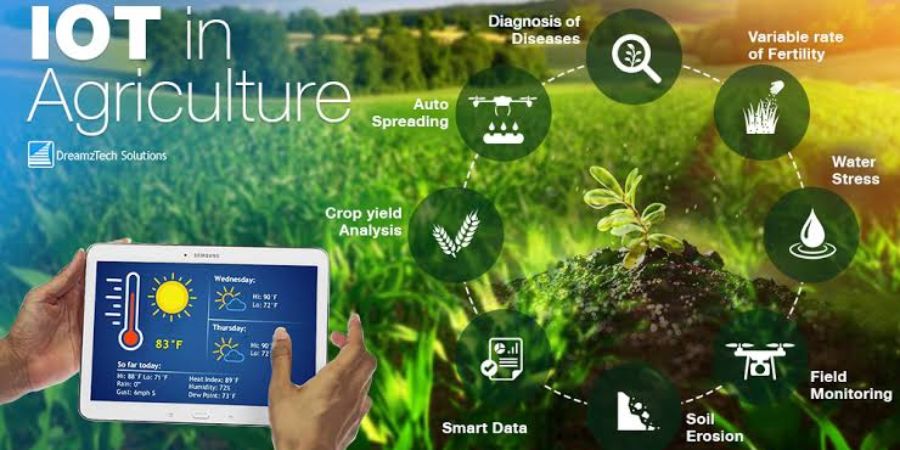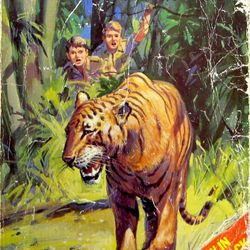

IoT devices collect data about soil, moisture, livestock health, temperature, level of dams, and chemical applications. It also monitors vehicles, weather, and fences of the farms. For designing smart farming using IoT, a combination of other technologies like embedded systems, sensors, actuators, control systems, robotics, AI, machine learning, web technologies, and wireless networks are used.
Farmers can view productivity and can check the conditions of the farm, through sensors or by placing a CCTV camera on the farm which saves time and money. By using digital technology in agricultural industries the performance and yield of crops and other dairy products would increase. It also reduces waste and yields productivity.

It is one of the applications of agricultural industries where drones can be used. Mostly, two types of drones used that are ground-based and aerial-based drones. The main use of drones is for real-time data capture and processing, crop and field land surveying, the study of plants and crops in detail, crop health imaging, and GIS (Geographic Information System) mapping. The drone collects data and types of images like multispectral, thermal, and visual images of flight and nearby land.
The smart greenhouse is used to control and monitor the humidity, temperature, watering, and heating that is suitable for enhancing and maintaining the health of crops, fruits, vegetables, etc. It automatically controls the climate without much human aid. Some greenhouses are solar-powered, which are IoT-sensor based, and can be accessed using a cloud server and connect remotely sending updates through apps and devices to the farmers.
The health, location, and well-being of livestock are collected and their conditions are identified using IoT-based technology. The sensor can be embodied or fitted, placed nearby by grassing fields or ranches and the data can be reported to the herd and farmer, the time consumption can be avoided for other activities that are done during livestock raising.
The collection of data through various sensors is accessible to farmers in a smartphone app using IoT. Crop management and monitoring are the main part of precision farming. Precision agriculture adopts smart innovative farming practices which makes the whole farming process fully controlled and accurate in terms of the growth and production of crops and livestock raising. It concentrates on high-tech agronomic solutions. It is the famous application of IoT in agriculture.
The climate is one of the major factors in agriculture. IoT lets the farmer know the real-time weather conditions. Sensors are placed in the field and real-time health status and monitoring of the agricultural field are updated. Weather conditions like rainfall, humidity, and temperature are included. With the help of precision farming, climatic conditions are taken into account. Other applications include remote sensing, computer imaging, and many more.
IoT has created a digital revolution in agriculture. This technology lessens the need for manual intervention, saves time and is easy to access, and is cost-effective. This technology will lead to future smart farming in our country. The hardware devices and analytical software along with other resources useful for farming yield crops and makes farmer profitable.
The concise overview of applications, benefits, and concepts of IoT technology in smart agriculture is cleared in this blog.
Thank you for reading the blog. Hope you like the blog. Do read, like, and comment on the blog. Have a good day ahead.












